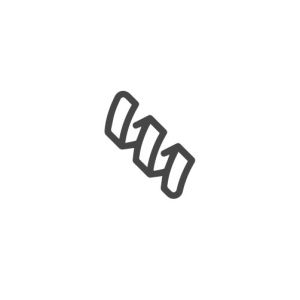Catalog No: OKCD02591
Size:96WELLS
Price: $800.00
SKU
OKCD02591
Availability: Domestic: within 1-2 weeks delivery | International: within 1-2 weeks delivery
Please contact customer service when ordering 10+ kits.
Contact Us:
- Toll Free: 888-880-0001
- Phone: 858-552-6979
- Email: info@avivasysbio.com
Shipping Info:
- $55: Antibody & Protein in US
- $55 + $25/Kit in US
- Contact us for international orders.
| Datasheets/Manuals | Printable datasheet for KCNJ10 ELISA kit (Rat) |
|---|
| Predicted Species Reactivity | Rat | ||||||||||||||||||||||
|---|---|---|---|---|---|---|---|---|---|---|---|---|---|---|---|---|---|---|---|---|---|---|---|
| Application | Enzyme-linked Immunosorbent assay-Sandwich | ||||||||||||||||||||||
| ELISA Kit Detection Method | Colormetric|Regular detection | ||||||||||||||||||||||
| ELISA Kit Duration | 3h | ||||||||||||||||||||||
| ELISA Kit Linearity |
| ||||||||||||||||||||||
| ELISA Kit Principle | The test principle applied in this kit is Sandwich enzyme immunoassay. The microtiter plate provided in this kit has been pre-coated with an antibody specific to Potassium Inwardly Rectifying Channel Subfamily J, Member 10 (KCNJ10). Standards or samples are then added to the appropriate microtiter plate wells with a biotin-conjugated antibody specific to Potassium Inwardly Rectifying Channel Subfamily J, Member 10 (KCNJ10). Next, Avidin conjugated to Horseradish Peroxidase (HRP) is added to each microplate well and incubated. After TMB substrate solution is added, only those wells that contain Potassium Inwardly Rectifying Channel Subfamily J, Member 10 (KCNJ10), biotin-conjugated antibody and enzyme-conjugated Avidin will exhibit a change in color. The enzyme-substrate reaction is terminated by the addition of sulphuric acid solution and the color change is measured spectrophotometrically at a wavelength of 450nm +/- 10nm. The concentration of Potassium Inwardly Rectifying Channel Subfamily J, Member 10 (KCNJ10) in the samples is then determined by comparing the O.D. of the samples to the standard curve. | ||||||||||||||||||||||
| ELISA Kit Range | 1.56-100ng/mL | ||||||||||||||||||||||
| ELISA Kit Recovery |
| ||||||||||||||||||||||
| ELISA Kit Reproducibility | Intra-assay Precision (Precision within an assay): 3 samples with low, middle and high level Potassium Inwardly Rectifying Channel Subfamily J, Member 10 (KCNJ10) were tested 20 times on one plate, respectively. Inter-assay Precision (Precision between assays): 3 samples with low, middle and high level Potassium Inwardly Rectifying Channel Subfamily J, Member 10 (KCNJ10) were tested on 3 different plates, 8 replicates in each plate. CV(%) = SD/meanX100 Intra-Assay: CV<10% Inter-Assay: CV<12% | ||||||||||||||||||||||
| ELISA Kit Component |
| ||||||||||||||||||||||
| Reconstitution and Storage | 2°C to 8°C, -20°C | ||||||||||||||||||||||
| Sample Type | Tissue homogenates, cell lysates and other biological fluids | ||||||||||||||||||||||
| Sensitivity | 0.61 ng/mL | ||||||||||||||||||||||
| Specificity | This assay has high sensitivity and excellent specificity for detection of Potassium Inwardly Rectifying Channel Subfamily J, Member 10 (KCNJ10). No significant cross-reactivity or interference between Potassium Inwardly Rectifying Channel Subfamily J, Member 10 (KCNJ10) and analogues was observed. | ||||||||||||||||||||||
| Assay Info | Assay Methodology: Quantitative Sandwich ELISA | ||||||||||||||||||||||
| Protocol Information |
|
| Gene Symbol | KCNJ10 |
|---|---|
| Gene Full Name | potassium voltage-gated channel subfamily J member 10 |
| Alias Symbols | ATP-sensitive inward rectifier potassium channel 10, ATP-sensitive inward rectifier potassium channel KAB-2, BIR10, BIRK1, Brain-specific inwardly rectifying K(+) channel 1, Inward rectifier K(+) channel Kir4.1, Kab-2, Potassium channel, inwardly rectifyi |
| NCBI Gene Id | 29718 |
| Protein Name | ATP-sensitive inward rectifier potassium channel 10 |
| Description of Target | May be responsible for potassium buffering action of glial cells in the brain. Inward rectifier potassium channels are characterized by a greater tendency to allow potassium to flow into the cell rather than out of it. Their voltage dependence is regulated by the concentration of extracellular potassium; as external potassium is raised, the voltage range of the channel opening shifts to more positive voltages. The inward rectification is mainly due to the blockage of outward current by internal magnesium. Can be blocked by extracellular barium and cesium. In the kidney, together with KCNJ16, mediates basolateral K+ recycling in distal tubules; this process is critical for Na+ reabsorption at the tubules. |
| Uniprot ID | P49655 |
| Protein Accession # | NP_113790.2 |
| Nucleotide Accession # | NM_031602.2 |
| Protein Size (# AA) | 379 |
- Protocol:
- Reconstitution & Storage Instructions
- Western Blotting/Immunoblotting (WB/IB) Protocol
- Immunohistochemistry (IHC) Protocol
- Immunocytochemistry (ICC) Protocol
- Enzyme-Linked ImmunoSorbent Assay (ELISA) Protocol
- Blocking Peptide Competition Protocol (BPCP)
- Immunoprecipitation (IP) Protocol
- Antibody Array (AA) Protocol
- Tips Information:
-
See our General FAQ page.
Write Your Own Review
We found other products you might like!






